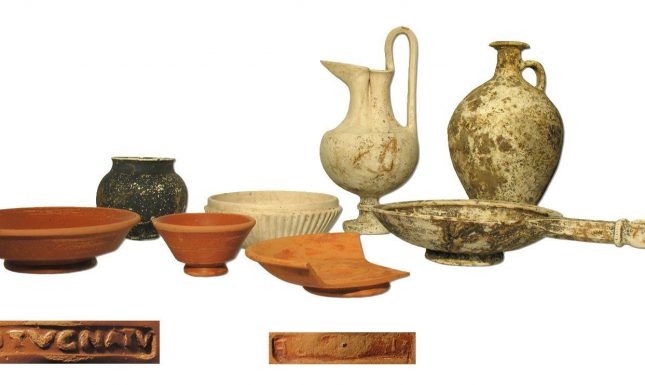I use terra sigillata, therefore I am Roman?
Roderick Geerts investigates the replacement of local handmade ceramic traditions by imported or wheelmade ceramics during the Roman period in the Low Countries.
During the Roman period (roughly 20 BC – AD 450) there is a significant change in material culture in the Low Countries. This process can be followed in the replacement of for instance the local handmade ceramic tradition with imported or wheelmade ceramics, that has historically been interpreted as a clear result of Romanisation. The inhabitants of the Low Countries becoming more Roman by adapting to other and new material culture.

In my research I will investigate this phenomenon, in order to see what did happen, when and whether Romanisation can be measured by the amount of ‘new’ ceramics the people used. To use a present-day parallel: we aren’t Swedish because of all our IKEA furniture at home. The same holds true for the past. The most well-known ‘Roman’ pottery, terra sigillata, isn’t by itself a measure of Romanisation. Pottery distribution and production is a complicated business with, in the case of terra sigillata, Europe-wide trade networks with specific distributions and markets. The interplay of the different wares, their distribution and the moment they get in fashion are important factors to the changing objectscapes.

Through the study of the changing objectscape the changes can be studied and compared, for the duration of the Roman period. The objectscape by definition includes all material culture, but in this study pottery will be used as pars pro toto because it does change a lot and is available in substantial quantities from most sites. As mentioned in the beginning there indeed is a shift from the local handmade pottery to the use, and even regional production, of new wheelmade ceramics. These newly produced wheelmade ceramics both show assimilation of new and traditional shapes, and both exist next to each other. This development shows that humans and objects interact with each other and exert influence which leads to change. New material culture influences the inhabitants, not just to acquire those objects but to incorporate them into their daily life, by replication or imitation thereof. For instance glass ribbed bowls, not existing in the pre-Roman Low Countries, get imitated in local handmade ceramics. Thereby adding this shape and potentially new dining habits, as ceramic bowls are uncommon in the Iron Age pottery, to the local cultural package. The same has happened to terra sigillata vessels, their shapes get incorporated in the regionally produced wares and there are even a few handmade imitations of terra sigillata plates known.

The chronological development of this phenomenon and the changes in general will be at the basis of my study in order to be able to follow the changing traditions in pottery production in more detail and thereby to study the cultural change and Romanisation of the Low Counties. The mutual influence that people and objects have on one another is quite clear, as illustrated by the examples above. The exact timing and development of these changes will present a more defined picture of the Romanisation and adaptation of new material culture in the Low Countries.
This blogpost has also appeared in Dutch.






0 Comments
Add a comment